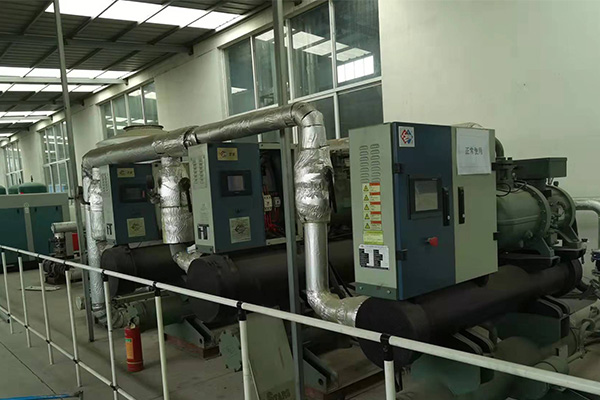Ensuring proper water quality and temperature settings is crucial in the operation and maintenance of HVAC chiller systems. This not only guarantees efficient system performance but also extends the equipment's lifespan and reduces operational costs. This article provides an in-depth look into the standards for water quality and temperature settings in chiller system maintenance.
1.Water Quality Standards
1. 1 Total Hardness
• Limit: Total hardness should not exceed 300mg/L.• Definition: Total hardness primarily refers to the concentration of calcium ions (Ca²⁺) and magnesium ions (Mg²⁺) in water.
• Impacts of Exceeding the Limit:
• Pipe Narrowing: High hardness causes mineral deposits on pipe walls, forming scale, which reduces pipe diameter, increases water resistance, decreases chilled water flow, and impairs cooling efficiency.
• Increased Energy Consumption: Scale increases water resistance, requiring the chilled water pump to work harder, thus increasing energy consumption.
• Corrosion: High hardness may lead to localized corrosion on certain metal pipes and equipment surfaces.
1.2 Total Alkalinity
• Limit: Total alkalinity should not exceed 400mg/L.• Definition: Alkalinity reflects the concentration of alkaline substances (such as carbonates and bicarbonates) in water.
• Impacts of Exceeding the Limit:
• Corrosion and Scale Buildup: Alkaline conditions can accelerate the corrosion of certain metal materials and promote scale formation, affecting heat transfer efficiency and equipment lifespan.
1.3 Total Acidity
• Limit: Total acidity should not exceed 200mg/L.• Definition: Acidity reflects the concentration of hydrogen ions (H⁺) in water, indicating the presence of acidic substances.
• Impacts of Exceeding the Limit:
• Pipe and Equipment Corrosion: Acidic environments can exacerbate the corrosion of metal materials, especially those like carbon steel that are not resistant to acid.
• Reduced Lifespan of HVAC Systems: Prolonged exposure to acidic conditions accelerates the corrosion of various system components (such as heat exchangers, valves, and pumps), shortening their effective lifespan.

2 Temperature Standards
2.1 Chilled Water Temperature Difference and Range
• Standard Temperature Difference: 5°C, meaning the difference between the supply and return chilled water temperatures.• Standard Temperature Range: 7°C to 12°C.
• Explanation: The chilled water should leave the evaporator at around 7°C and return at no more than 12°C.
2.2 Cooling Water Temperature Difference and Range
• Standard Temperature Difference: 5°C.• Standard Temperature Range: 30°C to 35°C, with a corresponding wet-bulb temperature of 28°C.
• Explanation: Wet-bulb temperature represents the lowest temperature achievable through evaporative cooling under specific atmospheric pressure, serving as a crucial parameter for assessing cooling tower efficiency.
2.3 Design Temperatures in Practical Applications
• Chilled Water Design Temperature Range: 32°C to 37°C, to meet specific building loads, climate conditions, or energy-saving strategies.• Cooling Water Design Conditions: 32°C to 37°C/28°C wet-bulb, considering the actual operating environment and equipment performance optimization.
3.Conclusion
The operation and maintenance of HVAC chiller systems involve adhering to complex water quality parameters (total hardness, total alkalinity, total acidity) and temperature settings (chilled water temperature difference and range, cooling water temperature difference and range). These standards are designed to ensure efficient and stable system operation, prevent equipment damage, extend service life, and reduce operational costs. Regular monitoring of water quality and appropriate treatment, along with setting reasonable operating parameters for chilled and cooling water based on equipment characteristics and environmental conditions, are essential for maintaining optimal system performance.4.About H.Stars Group:
H.Stars Group,30 years Hongkong brand factory ,manufactures a wide range of HVAC equipment: air-cooled chillers, water-cooled chillers, high-temperature heat pumps, AHU, and shell and tube heat exchangers supplying to worldwide 53+ countries. With H.Stars Hongkong brand recognition and 8 subsidiaries industrial chain, H.Stars Group has supplied HVAC products to 500 Fortune companies.
评论
发表评论